Anand Ekarshi On Making His Malayalam Feature Debut With The Acclaimed Aattam
Aattam: The Play is an incisive exploration of the human psyche in the form of a chamber drama. It is part of the programme at the International Film Festival of Kerala.
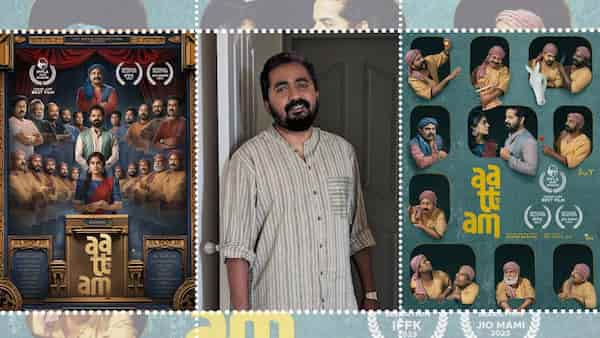
Last Updated: 03.45 PM, Dec 10, 2023
Anand Ekarshi’s Malayalam feature debut Aattam: The Play had its world premiere at 21st Indian Film Festival of Los Angeles where it won the Grand Jury Award for Best Film. An incisive exploration of the human psyche in the form of a chamber drama, the film had its Asia premiere at Jio MAMI Mumbai Film Festival 2023, was the opening film of Indian Panorama at the 54th International Film Festival of India, and an official selection in the International Film Festival of Kerala in the ‘Malayalam Cinema’ section. The film, based on amateur theatre artistes and their troupe, features an ensemble cast including Vinay Forrt, Zarin Shihab and a host of fresh faces from Malayalam theatre, blurring the line between reality and fiction. Anand Ekarshi spoke to this correspondent about the film.
The conversation has been edited for clarity.
Was Aattam a planned feature debut or did it accidentally turn into one?
Anand: It accidentally became my debut film. All the actors you see in the movie are my friends; we have been friends for 15 years and are part of a theatre group. During the pandemic, we were on a day trip and Vinay Forrt who was part of the group came up with the idea that he wanted to do something for his friends. All are great theatre actors but never got a break in films. He said if I write something and direct, he could help in any way that he can. So, this story was really built for and around the cast. So much so that I didn’t even change their names. The actors play characters named after them.
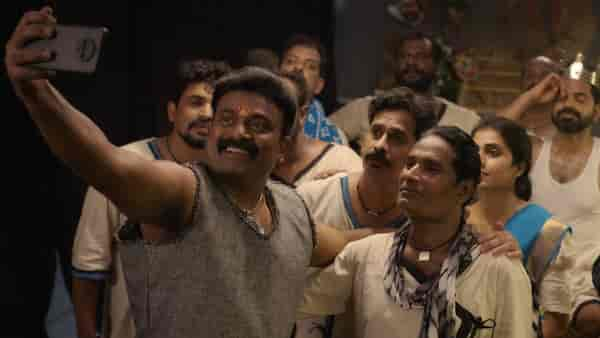
The film involves a sexual harassment incident coming to light and the drama is built around the men in the theatre group acting as judge and jury. Did the #MeToo cases in the Kerala film industry and the way they were handled by actors’ associations reflect in the writing and making of the film in any manner?
Anand: To be honest, no. None of them was an inspiration to write Aattam. Like I said, the initial idea was to make a film with this set of people. The script was written with the cast in mind. The idea was to create a dynamic of a group vs an individual. I had 11 men already cast and the individual had to be a woman. And then I thought about what theme I could take. Sexual harassment in a workplace has always been there of course; it’s a good thing we are talking more openly about it now and is relevant to the times for sure, but the goal was to take that and explore it cinematically in a way that isn’t preachy.
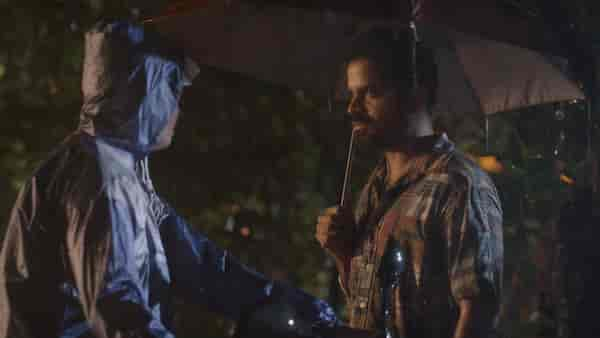
A lot of reviews have pointed out the similarities with 12 Angry Men. What are your thoughts about that and in addition to that film, was KG George’s Yavanika a reference point in any way? With the theatre group, the dynamics… That was a procedural of course and this is a more dramatic inquiry.
Anand: If there is one filmmaker who has inspired me it is Asghar Farhadi. I love the way he narrates, how he approaches characters with empathy. He doesn’t judge the characters; he lets the audience do that and in the end the audience questions their own judgement. As for 12 Angry Men, I think all chamber dramas will eventually look like 12 Angry Men. And since my film has 11 men, it was only natural! I did not think about it till the point where the script naturally progressed into a round table discussion with all the men. I didn’t try hard to avoid it in any way because it will only ruin the story that’s developing organically. Yavanika is a great, great movie! We’ve watched those films so many times, it must be there in the subconscious or the unconscious and they inspire us in ways we are not aware of.

The film begins with the camaraderie of the theatre group and then the partying at the hotel and one can really feel the build up to something ominous. How important was it for you to have that tension but then cut away to a different day and location and not show the incident itself?
Anand: The incident happened only to her and no one else saw that. And I don’t want the audience to see it either. The question then becomes: Are you going to believe her, and the question is posed to the audience as much as to the other characters. The audience, having their own imagination of how the crime could have happened, could not have happened and how she might have responded, that imagination is more powerful than showing what transpired. Some of my technical crew wanted to suggest it or return to the night in a flashback but I didn’t want to.
One of the aspects of the film that I really liked was how you show every character’s day job as a montage organically written into the script. They are theatre actors but like any other vocation, they have their day jobs as well.
Anand: It’s a key part of the story and it had to be shown for a reason. I want the audience to know about the jobs they are doing. When you see that you also understand the social class they belong to and their financial situation. That informs how they react to different information that comes up in the story. I also didn’t want to spend too much time doing it. I didn’t want to show it normally like in the first 10 minutes, that would be an easy route. So, when Vinay calls everybody, they all take the calls from their workplace, and it fit in the way I wanted it to in the script.
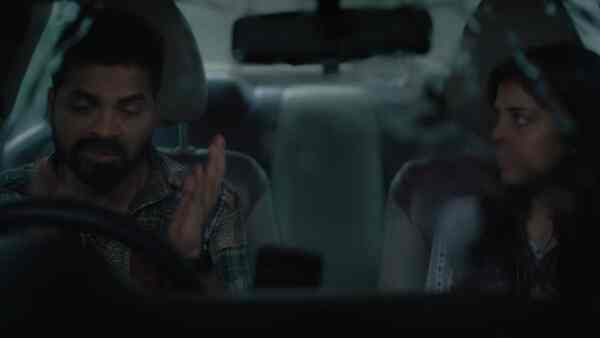
There is this debate that comes up as they are all discussing the issue. How as artists they must take a different stance, something more than expelling someone from the troupe. Is there something you wanted to hint at about the pretence of the artist or their predilection to take moral high ground?
Anand: Oh absolutely. Especially with filmmakers and people around cinema, they tend to take that moral high ground. Or even in the literature world, they assume they have a unique perspective. Which is true as well, I am not denying anything. But sometimes where it is real and where it is pretence is a blur. And from my experience, it has been more of a pretence. They want to see it in a different light but at the end of the day they don’t. It’s only in the debates but nothing translates into action. Like the character in the movie who talks about it and immediately changes his stance when he understands the gravity of the situation if the police and courts come into play.
Can you talk a little bit about how you block the characters in Madan’s house? It’s unsaid but shown visually that each person assumes a certain role, like who sits where, who is in the kitchen making tea, the plumber…
Anand: Yes. At the end of the day, we carry our personal jobs wherever we go. Like how this plumber in Madan’s house is fixing his toilet. There are hierarchies in every class and within them. We had to think about the positioning of characters, where they sit. The power shifts as and how the movie progresses. Vinay is in the corner in the beginning and when he gets what he wants, he moves to the center.
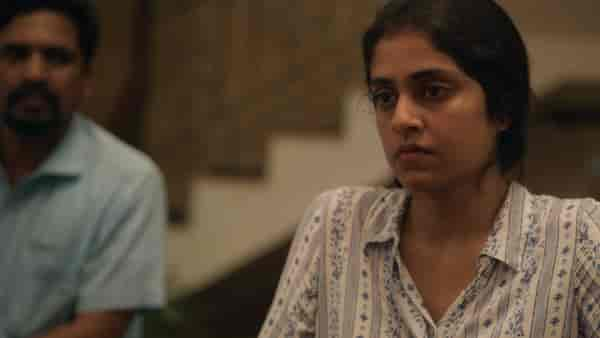
What was the more challenging aspect of Aattam for you? Was it the writing?
Anand: Oh 100 percent writing was the more challenging thing. Especially in a movie like this one. I tend to forget. There are 13 people, I used to have photos of all of them on the wall and think how this guy hasn’t said anything for three minutes, someone must speak up now. It had to look like a boxing match, since this is dialogue heavy there is a big chance of turning into a boring movie. The lines must jam into each other. Once you show the character and the audience has understood that person, there must be continuity in that behaviour and trait. How much he is going to talk, the way he talks, the metre of his dialogues. Some talk at length, some talk in short statements. I had to go back and check these things and make sure they achieve their own arcs; they have their highs and their lows. It’s not difficult but extremely challenging.

That means working closely with the editor on this film must have been the other arduous task after writing.
Anand: If you ask me, editing is the thing I love the most. It’s where cinema is brought to life. I love sitting for long, long hours. We sat for three months on editing. Each scene had 11 to 12 characters; to cut between their reactions and lines was a task in itself. And more importantly, the continuity. We used to throw off a lot of shots because of that mess up. There were times we thought we might not be able to pull off a good movie because we had to throw away a lot due to continuity errors in the background by someone or the other. I got a great guy as an editor — Mahesh Bhuvanend and it was the most satisfying experience working on the editing.
Can you tell us about the release plans for Aattam?
Anand: The plan is to release the film theatrically around January first week.

 Premium
Premium